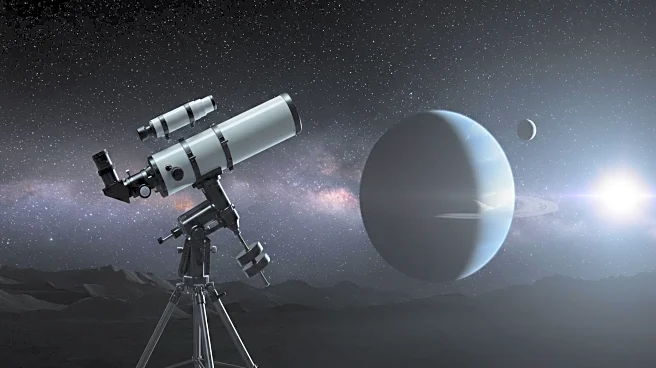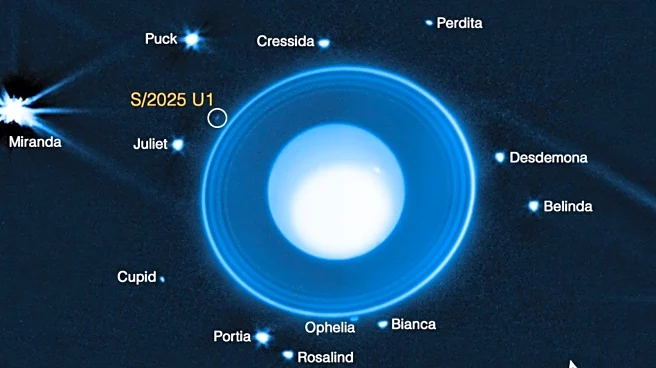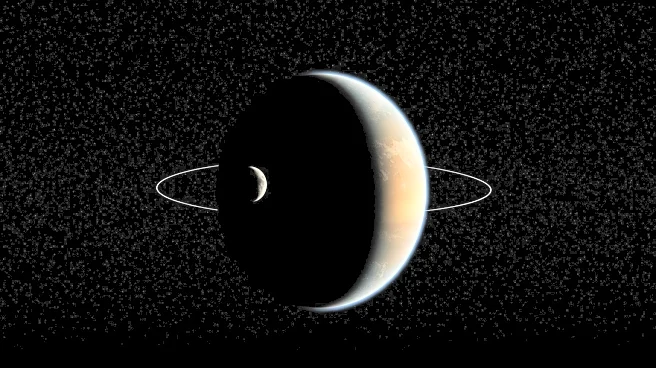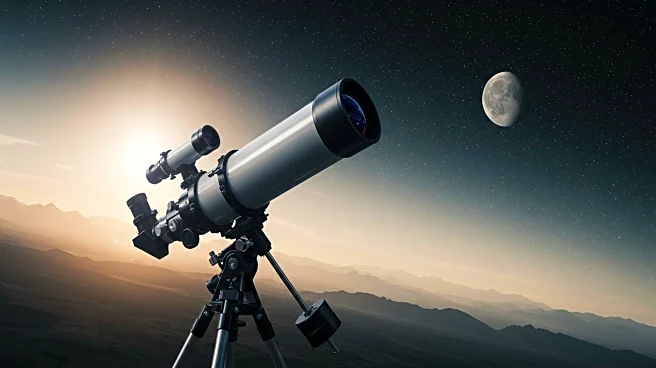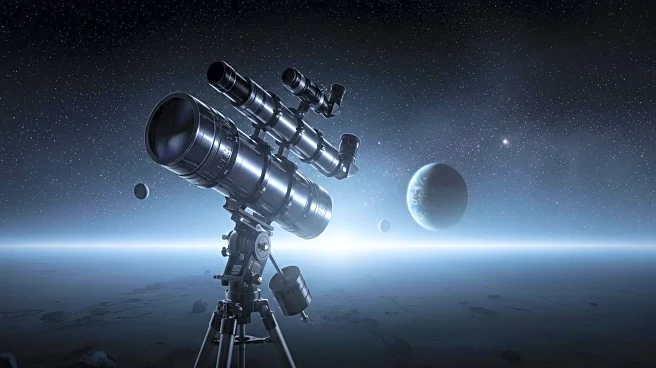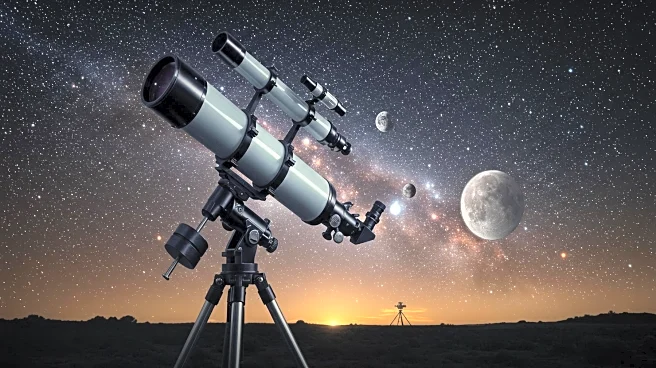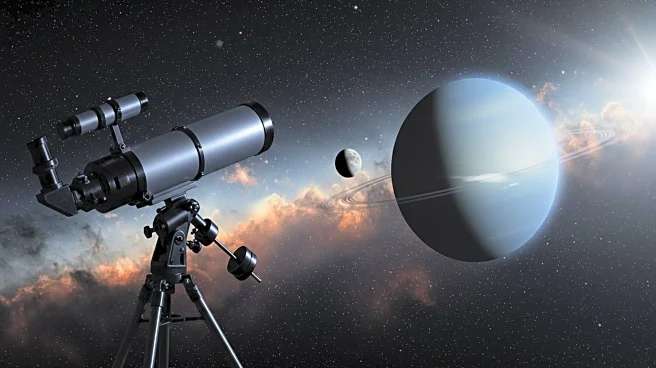Rapid Read • 8 min read
NASA has announced the discovery of a previously unknown moon orbiting Uranus, identified using the James Webb Space Telescope. The moon, tentatively named 'S/2025 U1', was first detected on February 2, 2025, during observations by the telescope's near-infrared camera. The discovery adds to Uranus' known satellite family, bringing the total to 29 moons. The moon is estimated to be only 10 km in diameter, assuming it has similar reflectivity to other small moons of Uranus. This discovery was made by a team led by the Southwest Research Institute, and while the findings have not yet undergone peer review, NASA's official channels have confirmed the discovery.
AD
The identification of a new moon around Uranus is significant for several reasons. It expands the understanding of Uranus' satellite system, which is known for its complexity and the interrelationships between its moons and rings. The discovery of 'S/2025 U1' could provide insights into the dynamics of Uranus' inner ring and the planet's overall structure. This finding also highlights the capabilities of the James Webb Space Telescope in uncovering celestial bodies that were previously undetectable, even by missions like Voyager 2. The discovery may lead to further exploration and understanding of Uranus, which remains one of the less studied planets in the solar system.
The next steps involve more detailed observations of the newly discovered moon to understand its characteristics and its relationship with Uranus' ring system. The official name for 'S/2025 U1' is expected to be approved by the International Astronomical Union. Further studies may reveal more about the moon's composition and its role within Uranus' satellite system. Researchers are likely to continue using the James Webb Space Telescope to explore other potential moons and phenomena around Uranus, contributing to the broader understanding of the planet's mysteries.
The discovery of 'S/2025 U1' underscores the importance of advanced space telescopes like the James Webb in expanding human knowledge of the universe. It also raises questions about the formation and evolution of Uranus' moons and rings, which could have implications for understanding similar systems around other planets. The naming convention for Uranus' moons, based on characters from Shakespeare and Pope, reflects the cultural intersection of science and literature, highlighting the tradition of naming celestial bodies after figures from human history.
AD
More Stories You Might Enjoy


